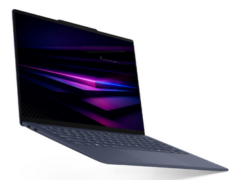- Home
- Internet
- Internet News
- India to Have 600 Million Internet Users by 2020, Says ASSOCHAM Deloitte Study
India to Have 600 Million Internet Users by 2020, Says ASSOCHAM-Deloitte Study

With increased 4G and 3G penetration, the number of Indians using the Internet is expected to reach 600 million by 2020 from 343 million currently, even as several challenges remain in realising the mission of Digital India, according to a report.
Spectrum availability in metros is about a tenth of the same in cities in developed countries. This has put a major roadblock in providing high speed data services and public Wi-Fi penetration remains low, said the ASSOCHAM-Deloitte study.
Globally, there is one Wi-Fi hotspot for every 150 citizens. For India to reach that penetration level, over 8 million hotspots are needed, of which only 31,000 hotspots are currently available, the report added.
Currently, over 55,000 villages remain deprived of mobile connectivity. This is largely due to the fact that providing mobile connectivity in such locations is not commercially viable for service providers, it said.
"Challenges in policy, such as taxation, right of way and restrictive regulations are major roadblocks in realising the vision of Digital India...lack of clarity in FDI policies, for instance, have impacted the growth of e-commerce," it said.
The study observed that implementation of Digital India programme has been hampered by various issues, such as projects assigned to PSUs being delayed due to challenges related to skills, experience and technical capabilities.
Non-availability of digital services in local languages is also a major concern, added the study.
"With the proliferation of cloud-based services like DigiLocker, data security has emerged as a major challenge. The data breach in August in which debit card data of over 3.2 million subscribers was stolen highlights the importance of implementing foolproof security systems," it pointed out.
The study suggested that effective collaboration with the private sector is critical to the development of the digital infrastructure, noting that innovative engagement models that ensure commercial viability need to developed jointly through consultation with industry bodies.
Moreover, startups need to be incentivised for the development of the last mile infrastructure and localised services and applications. In rural and remote areas, private sector players should be incentivised to provide last mile connectivity.
The study observed that going forward, rural adoption of data-enabled devices is expected to increase with the BharatNet initiative under Digital India.
India is the second largest mobile phone market globally with over 1 billion mobile subscriptions. Of this, smartphone users account for approximately 240 million subscribers which is expected to grow to 520 million by 2020, noted the study.
However, it said despite rising smartphone penetration and Internet user base, digital literacy in India has been low.
Catch the latest from the Consumer Electronics Show on Gadgets 360, at our CES 2026 hub.
Related Stories
- Samsung Galaxy Unpacked 2025
- ChatGPT
- Redmi Note 14 Pro+
- iPhone 16
- Apple Vision Pro
- Oneplus 12
- OnePlus Nord CE 3 Lite 5G
- iPhone 13
- Xiaomi 14 Pro
- Oppo Find N3
- Tecno Spark Go (2023)
- Realme V30
- Best Phones Under 25000
- Samsung Galaxy S24 Series
- Cryptocurrency
- iQoo 12
- Samsung Galaxy S24 Ultra
- Giottus
- Samsung Galaxy Z Flip 5
- Apple 'Scary Fast'
- Housefull 5
- GoPro Hero 12 Black Review
- Invincible Season 2
- JioGlass
- HD Ready TV
- Laptop Under 50000
- Smartwatch Under 10000
- Latest Mobile Phones
- Compare Phones
- Motorola Signature
- Vivo Y50e 5G
- Vivo Y50s 5G
- Realme 16 Pro+ 5G
- Realme 16 Pro 5G
- TCL Nxtpaper 70 Pro
- OPPO A6 Pro 5G
- Honor Power 2
- Lenovo Yoga Slim 7x (2025)
- Lenovo Yoga Slim 7a
- Realme Pad 3
- OPPO Pad Air 5
- Xiaomi Watch 5
- Huawei Watch 10th Anniversary Edition
- Acerpure Nitro Z Series 100-inch QLED TV
- Samsung 43 Inch LED Ultra HD (4K) Smart TV (UA43UE81AFULXL)
- Asus ROG Ally
- Nintendo Switch Lite
- Haier 1.6 Ton 5 Star Inverter Split AC (HSU19G-MZAID5BN-INV)
- Haier 1.6 Ton 5 Star Inverter Split AC (HSU19G-MZAIM5BN-INV)

















